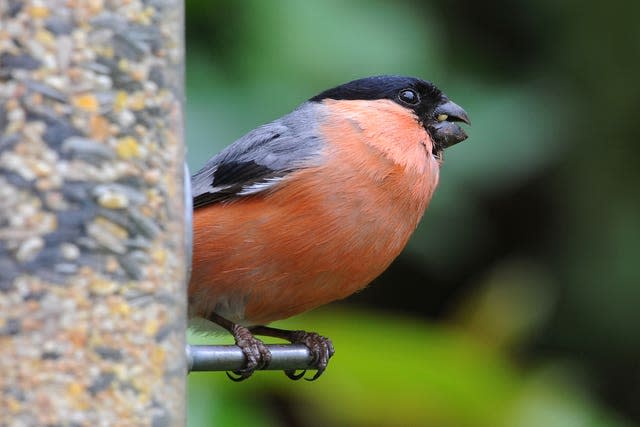Climate change affecting Scotland’s bird population, report finds
Climate change has led to an increase in some Scottish bird populations and a decrease in others, according to a report.
NatureScot found hotter and wetter weather is creating significant changes to the numbers and species of birds thriving in urban, woodland, upland and farmland habitats.
Its report, The Terrestrial Breeding Birds Indicator 1994-2022, found woodland birds have seen the largest rise, with farmland and urban birds showing a slight increase.
Researchers said this demonstrates changes in summer weather are attracting more terrestrial birds which would not normally venture north.

The report found 18 of 23 species in the Scottish woodland indicator have increased in the last 30 years.
Populations of chiffchaff, blackcap and great spotted woodpeckers rose the most, all up by more than 500%.
Bullfinch, great tit, wren, tree pipit, willow warbler and song thrush populations increased by more than 50%.
The largest long-term rises in farmland birds were in goldfinch populations, which saw a 358% increase, whitethroat (128%), great tit (120%) and magpie (104%).
Long-term decreases in farmland bird populations include declines of more than 50% for kestrel, greenfinch and lapwing, and a 25-50% fall for oystercatchers, rook, pied wagtail and skylarks.
🧵 We've published the new terrestrial breeding birds indicator for Scotland, which shows that climate change is affecting the numbers and species of birds thriving in our urban, woodland, upland and farmland habitats.
🐦 https://t.co/Qhn01zP9ee pic.twitter.com/HWxZg7SFTZ
— NatureScot (@NatureScot) January 11, 2024
Scottish upland birds are faring the worst, with 12 species in the category having decreased in population since 1994.
Black grouse, curlew and dotterel populations have declined by more than 50% due to climate change, forest expansion and changes in land management practices such as grazing and predator control.
Simon Foster, NatureScot trends and indicators analyst, said: “Climate is one of the key drivers of change for Scotland’s breeding birds, and this new report on the populations of our upland, woodland, farmland and urban species is evidence of the effect our changing climate is having on our biodiversity.
“These changes tend to favour common, generalist species such as goldfinch and magpies, which can mask real and significant changes in rarer or more specialist species.
…but there are many inspiring initiatives in Scotland working to improve the fortunes of these birds, and such amazing actions are the foundations of how we mitigate the effects of climate change on Scotland’s biodiversity for generations to come.🌈 https://t.co/pIx4nxnweM pic.twitter.com/1BsnaJCOBT
— NatureScot (@NatureScot) January 11, 2024
“The report shows how our weather today will affect bird populations in future years.
“With extreme weather such as flooding and heat becoming more prevalent, we must ensure that improving Scotland’s nature and habitats uses the latest science to help deliver the best results.
“There are many inspiring initiatives in Scotland working to improve the fortunes of terrestrial breeding birds, including the Working for Waders project, which is achieving targeted action for upland bird populations.
“The introduction of greater woodland diversity; increased activity from farmers helping to create rich habitats for our farmland bird populations; and peatland restoration schemes providing an all year round water source, even during sustained periods of drought, increase invertebrates across the restored moor, an important food resource for chicks and adult birds.
“Such vital actions are the foundations of how we mitigate the effects of climate change on Scotland’s biodiversity for generations to come, and therefore must be intensified if we are to reverse and restore these declines.”


